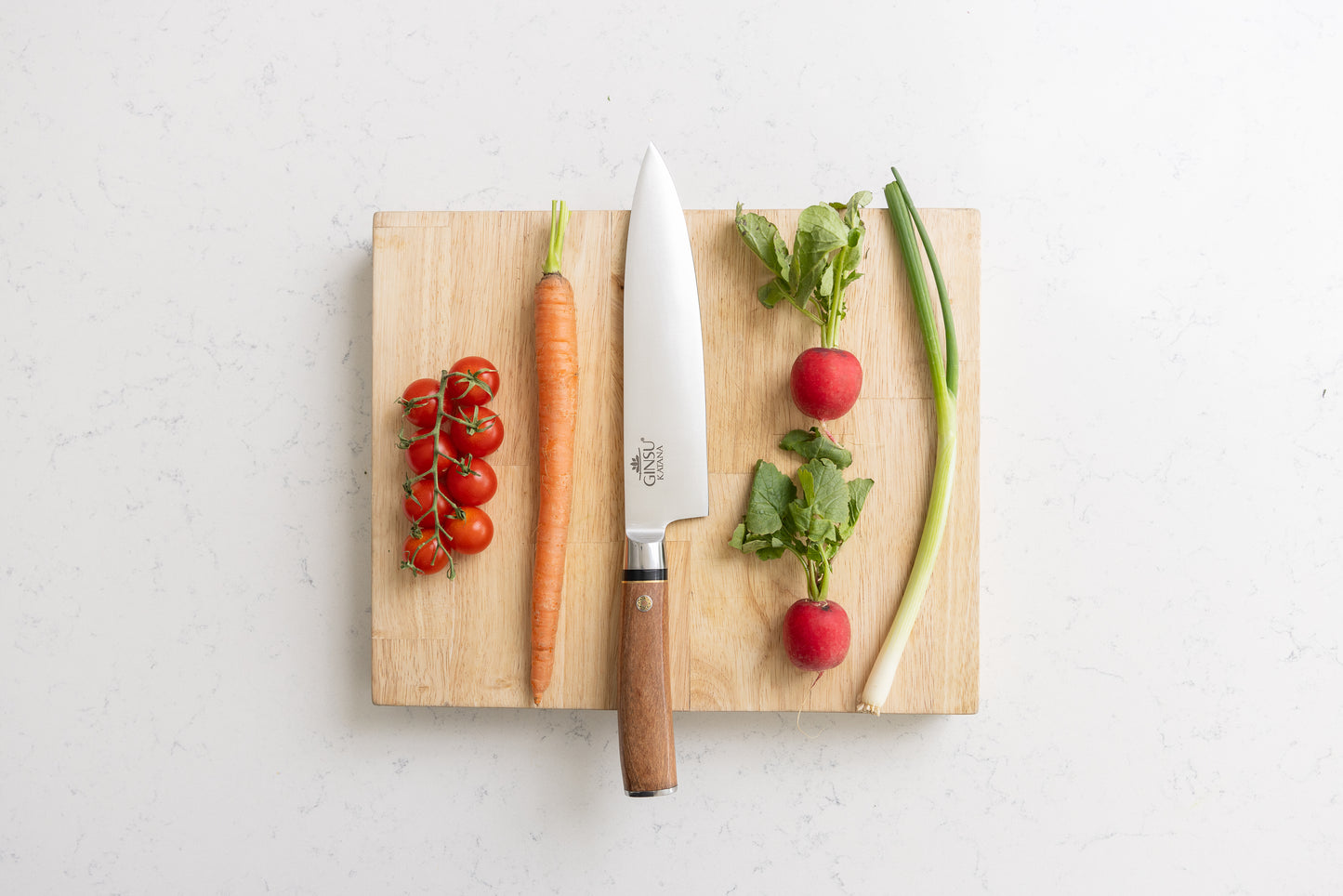
We are often asked, what is the most common kitchen knife, the one that is used most by chefs? And the answer is simple: the Gyuto, also known in the western world as the Chef's Knife.

In the world of culinary arts, this one tool stands above the rest. A staple in both professional kitchens and home cookware collections, this multi-purpose blade is renowned for its versatility, precision, and efficiency. In this article, we delve into the reasons behind the chef's knife's popularity, exploring its history, design, functionality, and unmatched utility that have made it the most common kitchen knife.
Historical Background
The roots of the chef's knife can be traced back to ancient times when early civilizations used rudimentary knives for various cutting tasks. As metallurgy advanced, knives evolved into more specialized tools, but it was during the 19th and 20th centuries that the modern chef's knife took shape. The blending of European and Asian knife-making techniques and designs led to the creation of the iconic Western-style chef's knife we recognize today.
Anatomy of the Chef's Knife
A typical chef's knife consists of three primary parts: the blade, the tang, and the handle. Blades are typically made from high-carbon stainless steel, which offers an ideal balance of durability, sharpness retention, and resistance to corrosion. The blade's design includes a curved edge for rocking motions during chopping and a pointed tip for precise cuts.
The tang is the part of the blade that extends into the handle, providing stability and balance. It can be either full tang, running the entire length of the handle, or partial tang, extending only partially into the handle. Full tang knives are generally more robust and durable, making them a preferred choice among professional chefs.
The handle materials range from wood, plastic, composite, to stainless steel. The handle should be comfortable to grip, providing the user with control and reducing the risk of fatigue during prolonged use.
Blade Design and Functionality
The chef's knife boasts a wide, sturdy blade, usually ranging from 6 to 12 inches in length, with an average of 8 inches being the most popular size. This length strikes a perfect balance between maneuverability and slicing surface area. The blade's thickness tapers from the spine to the edge, allowing for precision cuts and a rocking motion when chopping.
The curved belly of the blade enables efficient chopping and mincing, while the pointed tip facilitates delicate tasks like trimming, scoring, and detail work. The blade's weight and balance contribute to its unmatched versatility, making it suitable for a wide range of cutting techniques, including slicing, dicing, and julienning.
Versatility in the Kitchen
The chef's knife reigns supreme as the go-to tool for chefs and home cooks alike due to its unparalleled versatility. Its ability to handle a vast array of ingredients, from meats and vegetables to herbs and fruits, makes it a time-saving and essential kitchen companion.
Whether you're mincing garlic, dicing onions, or slicing meat, the chef's knife excels at all tasks, streamlining meal preparation. Its capacity to perform both delicate and heavy-duty cutting with equal ease eliminates the need for multiple specialized knives, saving space and cost in the kitchen.
Professional and Home Use
One of the chief reasons for the chef's knife's widespread adoption is its popularity in professional kitchens. Chefs require a reliable and efficient tool that can withstand the rigors of a bustling kitchen environment. The chef's knife's design, featuring a sharp and sturdy blade coupled with a comfortable grip, is tailor-made for the demanding culinary landscape.
Moreover, home cooks have also embraced the chef's knife for its ease of use and adaptability. As cooking enthusiasts aim to replicate the professional experience in their home kitchens, the chef's knife has become an essential part of their culinary arsenal.

Maintenance and Care
To maintain the chef's knife's peak performance and longevity, regular maintenance and proper care are essential. Honing the blade using a honing rod helps realign the edge and keeps it sharp between sharpenings. Sharpening the knife with a whetstone or an electric sharpener will ensure the blade stays razor-sharp over time.
Storing the chef's knife in a knife block or on a magnetic strip protects the blade from unnecessary wear and prevents accidents. Using a cutting board made of soft materials, such as wood or bamboo, will preserve the knife's edge and minimize the risk of chipping.
In conclusion, the chef's knife has earned its place as the most common kitchen knife due to its unmatched versatility, functional design, and efficiency in the culinary world. Its ability to perform a wide range of tasks, from slicing and dicing to chopping and mincing, makes it an invaluable tool for both professionals and home cooks. As culinary traditions continue to evolve, the timeless chef's knife will remain a beloved and essential companion in kitchens around the globe.
